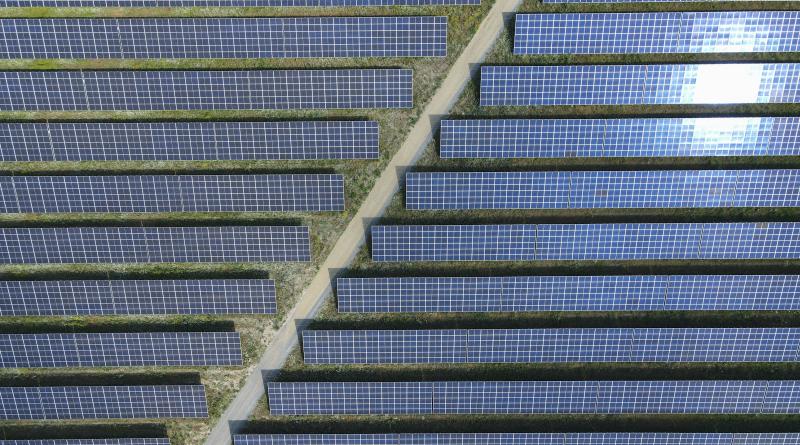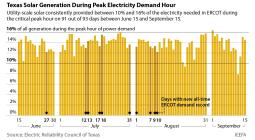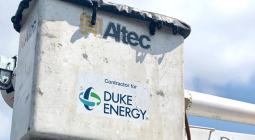How solar strengthened Texas’ grid

Electricity demand in Texas soared to record highs this summer, but the high reliability of utility-scale solar power was instrumental in keeping the grid running smoothly, a new analysis has found
The rapid expansion of solar power played a particularly key role during peak electricity usage hours — amid a sizzling season of increased consumption, according to the Institute for Energy Economics and Financial Analysis (IEEFA).
From June 15 through Sept. 15 — the highest power use period of the year — solar accounted for more than 10 percent of the peak electricity demand on 91 of those 93 days, per the report.
Nonetheless, solar power — and renewable energy in general — has become an escalating source of political tension, with Texas Monthly characterizing the situation as “The Texas GOP’s War on Renewable Energy.”
In June, Gov. Greg Abbott (R) signed a bill establishing new tax breaks for economic development projects — while barring renewable energy initiatives from applying for such benefits, The Texan reported.
“There’s already federal incentives for renewable projects, and those will continue to be allowed,” Abbott said prior to signing, according to the Texas Tribune.
“As it concerns especially energy and power and the power grid, our focus is on dispatchable power,” the governor added, referring to resources such as natural gas or coal.
Yet during the 93-day stretch of usage highs this summer, solar energy regularly provided between 10 and 16 percent of peak-hour electricity needs, the IEEFA analysis determined.
“That’s particularly impressive because those peak demand hours usually come later in the day than when solar generation is not at its highest,” the authors noted.
The Electric Reliability Council of Texas — Texas’s grid operator — typically endures the greatest electricity consumption in the late afternoon, with that peak period terminating at around 5 or 6 p.m., per the analysis.
Describing the growth of solar energy generation in Texas during high-demand months as no less than “extraordinary,” the authors noted that in 2019, solar accounted for only a bit more than 1 percent of electricity needs during these peak periods.
As Texans contended with soaring temperatures this summer, the grid set 10 new demand records, the analysis found.
The latest such record occurred on Aug. 10, when 85,464 megawatts were required at peak — up 6.6 percent from 2022’s record high.
But also on Aug. 10, solar power delivered 10,435 megawatts, or 129 percent more than during the 2022 peak event.
“The figures undercut a key argument used by fossil fuel advocates when talking about renewables — that they are not reliable or predictable,” the IEEFA authors stated.
“The data proves otherwise,” they added. “Solar is both reliable and predictable.”




